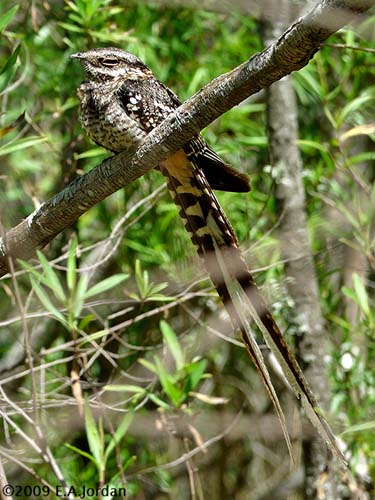
Scissor-tailed Nightjar
Hydropsalis torquata
Caprimulgiforme Order – Caprimulgidae Family
BIOMETRICS:
Length: 25-30 cm (excluding the tail of 27-36 cm in male)
Weight: M : 47-52 g – F : 48-75 g
DESCRIPTION:
Scissor-tailed Nightjar is a South American species. The long tail feathers are conspicuously displayed during the courtship displays.
DIET:
Scissor-tailed Nightjar feeds mainly on numerous kinds of insects such as beetles, moths, flies, bugs and ants, and also Orthoptera such as crickets ad grasshoppers.
PROTECTION / THREATS / STATUS:
Scissor-tailed Nightjar is uncommon, but also locally common in some parts of the range. It may be seen in several protected areas.
This species is not threatened at this moment, and evaluated as Least Concern by Birdlife International.
Fr : Engoulevent à queue en ciseaux
All : Scherenschwanz-Nachtschwalbe
Esp: Chotacabras Tijereta
Ital: Succiacapre coda a forbice
Nd: Spiesstaartnachtzwaluw
Russe: Бразильский козодой
Photographers:
Eduardo Andrés Jordan
MIS AVES – AVES DE ARGENTINA
Philippe et Aline Wolfer
OISEAUX D'ARGENTINE
Text by Nicole Bouglouan
Sources :
HANDBOOK OF THE BIRDS OF THE WORLD Vol 5 by Josep del Hoyo-Andrew Elliott-Jordi Sargatal - Lynx Edicions - ISBN: 8487334253
BirdLife International (BirdLife International)

The race H.t. furcifera is larger and often paler. Nuchal collar is duller, but the tail may be longer.
VOICE: SOUNDS BY XENO-CANTO
Scissor-tailed Nightjar male utters high-pitched “tsig” while flying.
Song is a series of “tsip” repeated several times.
Male usually sings from perches and sometimes when in flight.
HABITAT:
Scissor-tailed Nightjar frequents wooded areas, forest and woodlands, and also “cerrado”, a kind of savannah with dense vegetation found in South America. This bird also occurs in thorny grasslands with some scattered vegetation, acacias and eucalyptus. It is also seen in urban parks and up to 500 metres of elevation.
RANGE:
Scissor-tailed Nightjar is a species found in Argentina, Brazil, Bolivia, Paraguay, Peru, Surinam and Uruguay.
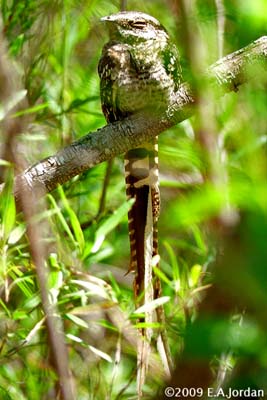
Scissor-tailed Nightjar performs courtship displays using the long tail with the beautiful elongated outer rectrices. Displays often occur on the ground, in open patches. Male opens and closes rapidly the wings, producing snapping sound, while it hops into the air. The long tail follows these movements, adding something “aerial” to these displays.
Courtship rituals are performed on the ground or on perch, but also commonly in the air where the bird performs short flights and wing clapping.
Female lays two creamy-white, pinkish-buff or pale brown eggs heavily marked grey and brown. Eggs have cryptic colours and blend in with the ground.
Incubation period is not known, but in most species, this period lasts between 16 and 22 days. Chicks often have cryptic colours and are fed by both parents, probably by regurgitation of insects.
Fledging period is unknown too, but in numerous species, young fledge between 25 and 35 days after hatching, and remain with parents for several weeks after fledging.
Adults perform some displays, in order to move predators away from the nest-site.
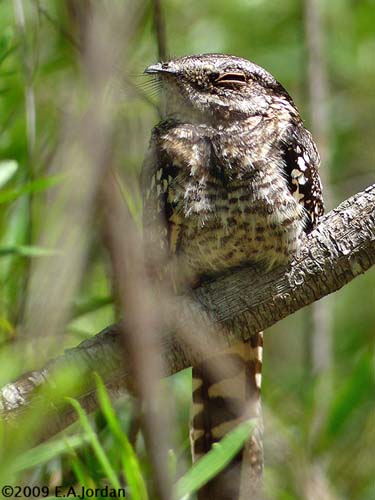
Adult male has brown upperparts streaked blackish-brown, with broad bright chestnut nuchal collar. Upperwing is brown with numerous buff and whitish spots on coverts. We can see a pale buff line along scapulars.
Underparts are whitish, barred and spotted brown, mainly on breast. Belly and flanks are rather buffy-white barred brown.
Tail shows elongated whitish outer rectrices edged brown.
On the head, crown is brown finely streaked blackish. We can see fine whitish malar stripe. Chin and throat are pale buffy-white.
Bill is blackish, surrounded by elongated stiff rictal bristles. Eyes are dark brown, surrounded by flesh-coloured eye-ring. Legs and feet are brownish.
Female has similar plumage, but she has shorter tail without white. She is slightly larger than male.
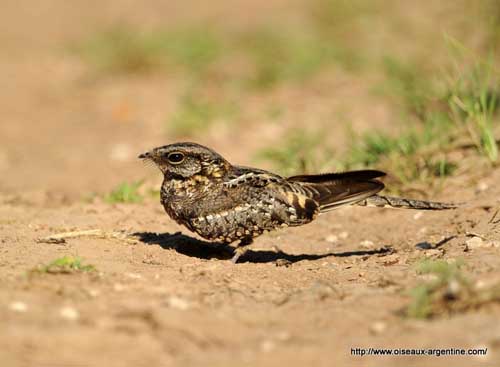
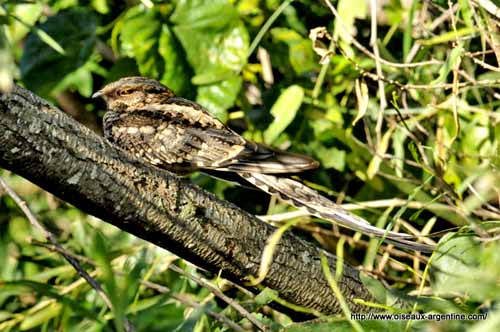
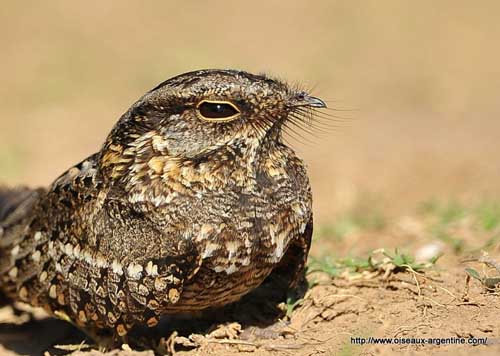
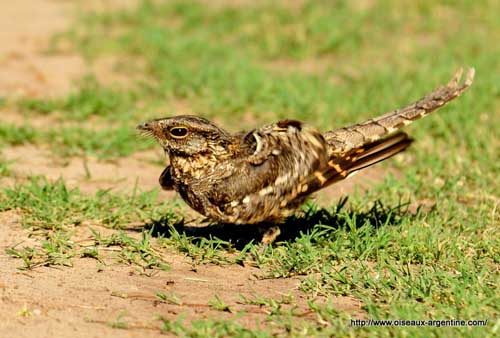
Scissor-tailed Nightjar movements are poorly known. The race “furcifera” disappears from its breeding areas during the winter.
Some populations might be partially migratory.
Scissor-tailed Nightjar is territorial, using vocalisations and displays to defend the area.
FLIGHT:
Scissor-tailed Nightjar is extremely agile in flight in spite of the long tail. It obtains a high degree of aerial skill by having a large wing area in proportion to the small body, and a highly manoeuvrable tail used a perfect rudder.
REPRODUCTION:
Breeding season varies according to the range.
The nest-site is situated among vegetation on rocky hillsides, also among acacias. Scissor-tailed Nightjar does not build any nest. Eggs are laid on the bare ground.